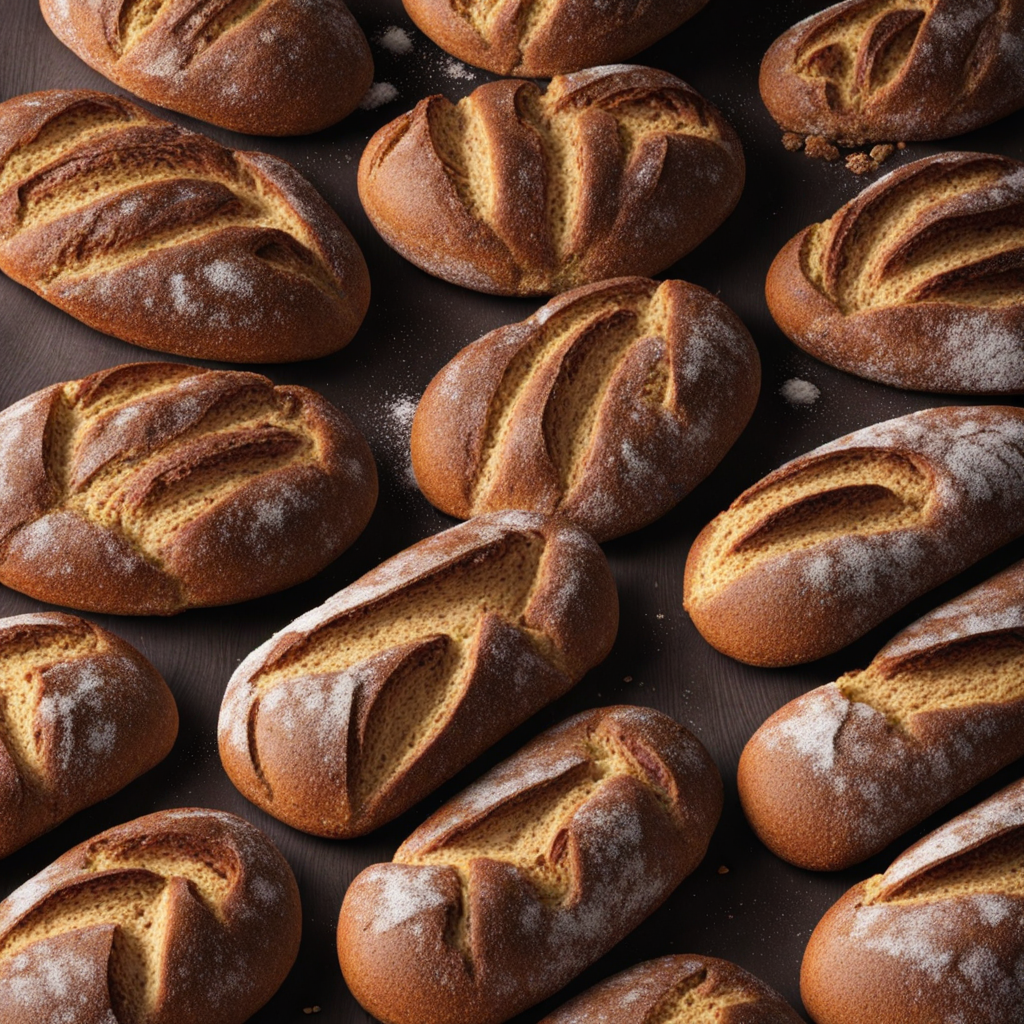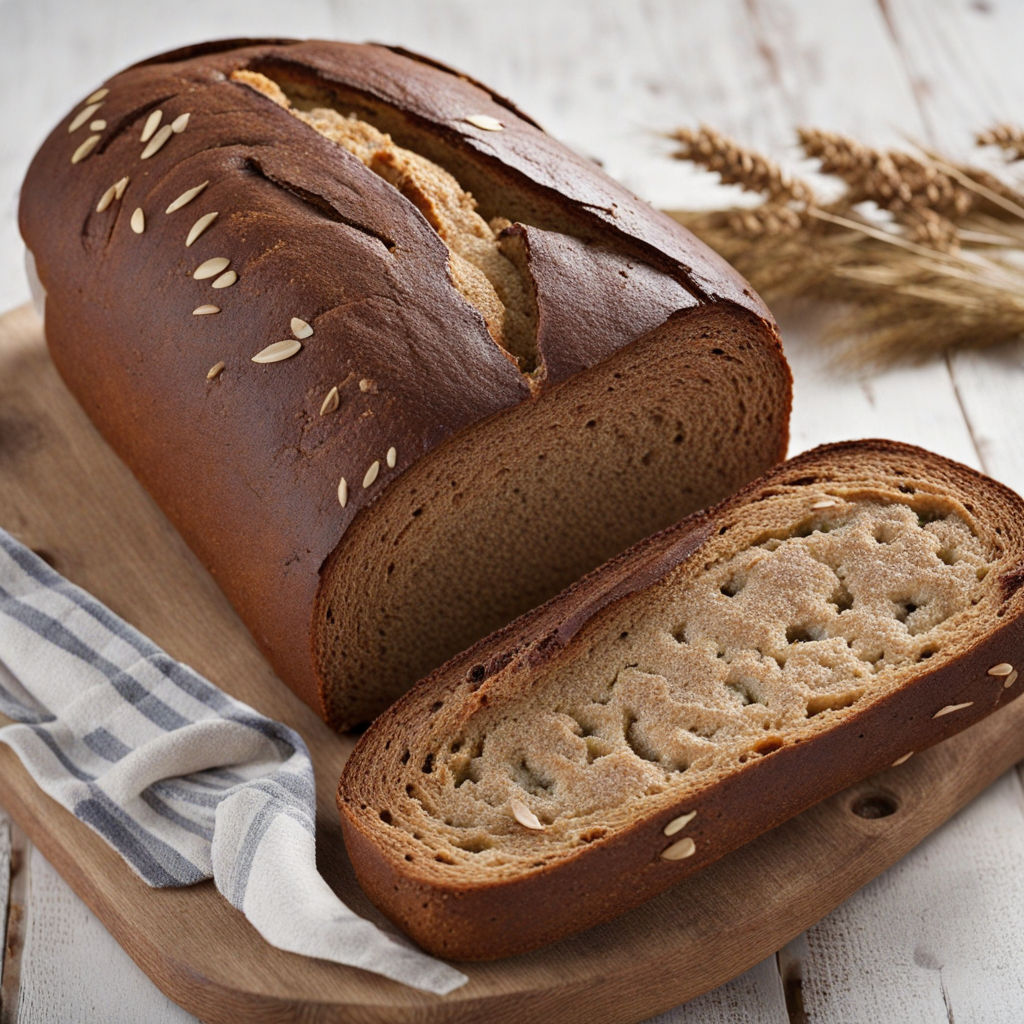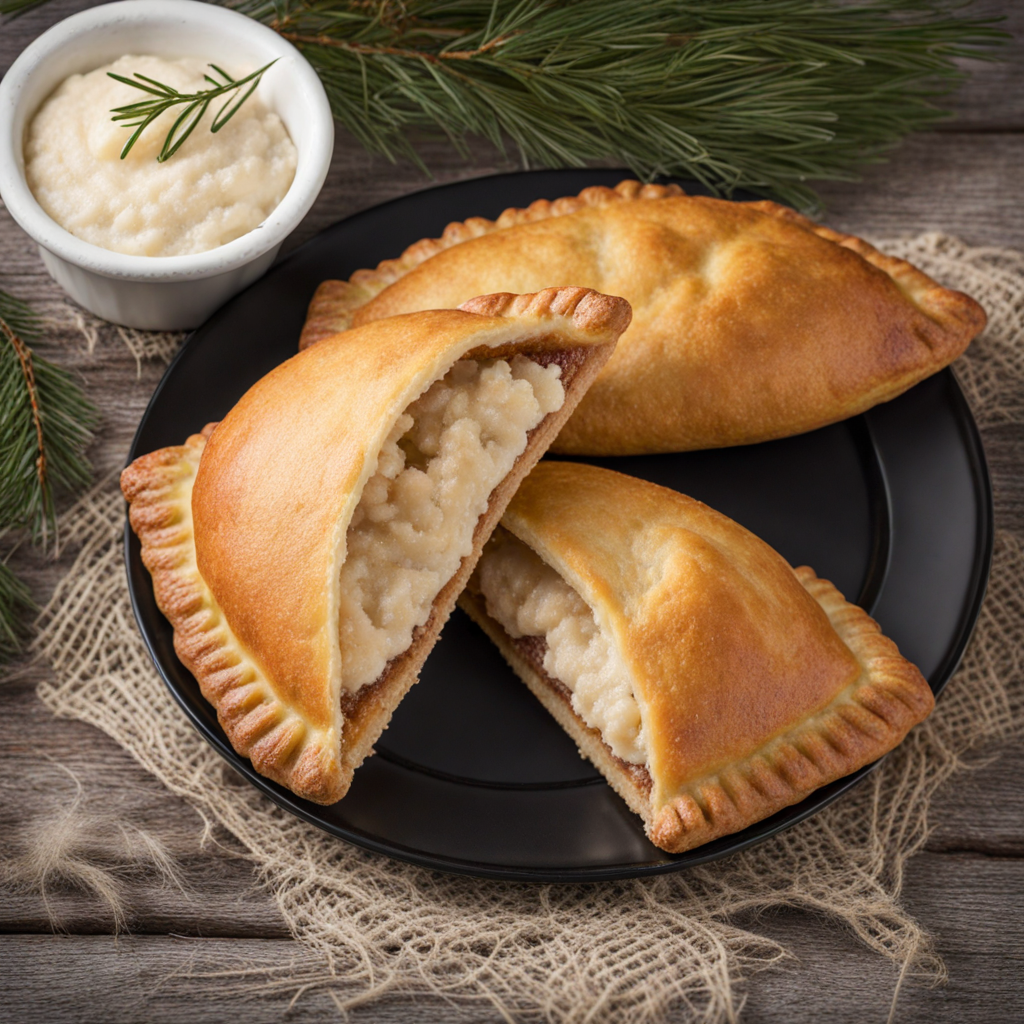Finnish Archipelago Bread
Finnish Archipelago Bread, or " saaristolaisleipä," is a unique and hearty bread that embodies the essence of Finland's maritime culture. This traditional rye bread is a delightful blend of dark rye flour, white flour, and malt, which lends it a rich, slightly sweet flavor that is both complex and comforting. The bread is often enhanced with ingredients like treacle or molasses, which contribute to its distinctive taste and moist texture. Its dense, chewy crumb is balanced by a slightly crispy crust, making it a satisfying choice for any meal of the day. The preparation of Finnish Archipelago Bread is a labor of love, often involving a slow fermentation process that allows the flavors to develop fully. It is typically baked in a round shape, resembling the islands of the Finnish archipelago, and can be adorned with various toppings, such as seeds or grains, for added texture and visual appeal. Served warm or at room temperature, this bread pairs beautifully with butter, cheese, or smoked fish, showcasing the rich culinary traditions of Finland. This versatile bread can be enjoyed in numerous ways, whether as a base for a hearty sandwich, a side to accompany soups and stews, or simply sliced and served with a selection of preserves. Its robust flavors and rustic appearance make Finnish Archipelago Bread not only a delicious addition to any meal but also a wonderful way to experience the natural bounty of Finland's coastal regions. Each bite offers a taste of the land and sea, inviting you to explore the unique culinary heritage of this enchanting country.
How It Became This Dish
The History of Saaristolaisleipä: A Finnish Bread with Deep Roots Saaristolaisleipä, or "Archipelago Bread," is a traditional Finnish bread that embodies the rich cultural heritage and culinary practices of Finland’s coastal communities. Characterized by its dense, dark texture and slightly sweet flavor, this bread has been a staple in Finnish households, particularly in the archipelago regions, for centuries. Understanding Saaristolaisleipä involves delving into its origins, cultural significance, and the evolution it has undergone through the years. #### Origins of Saaristolaisleipä The roots of Saaristolaisleipä can be traced back to the 18th century in the archipelago regions of Finland, particularly in the Åland Islands and along the southwestern coast. The bread was made by seafarers and fishermen who needed a durable and nutritious food source that could withstand long journeys and harsh conditions at sea. The use of rye flour, a primary ingredient in Saaristolaisleipä, was common in Finland due to its adaptability to the country’s colder climate and poor soil conditions. Rye was often mixed with barley, oats, and sometimes wheat, creating a bread that was both hearty and sustaining. The unique combination of ingredients used in Saaristolaisleipä sets it apart from other breads. The recipe typically includes rye flour, water, yeast, and a sweetening agent like syrup or molasses, which imparts a distinct flavor and dark color. Some variations also incorporate spices such as caraway seeds, which enhance the bread’s aroma and taste. The bread's distinctive texture arises from the method of preparation, which includes a lengthy fermentation process and baking in a very hot oven. #### Cultural Significance Saaristolaisleipä holds a special place in Finnish culture, especially in the context of family and community gatherings. It is often served during significant occasions such as Christmas, Midsummer, and other festive events. The bread is traditionally accompanied by butter, cheese, and cured fish, reflecting the Finnish affinity for simple yet flavorful food. In many households, the preparation of Saaristolaisleipä is a communal activity, where family members gather to bake and share stories. This communal aspect reinforces social bonds and preserves the traditions passed down through generations. The bread is not merely a source of sustenance; it represents a connection to the land, the sea, and the cultural identity of the Finnish people. Moreover, Saaristolaisleipä is often linked to the concept of "koti," meaning home. It symbolizes comfort and warmth, evoking feelings of nostalgia for many Finns. In the archipelago, it is not uncommon for families to have their own unique recipes that have been cherished over the years, contributing to a sense of pride and belonging within the community. #### Development Over Time As Finland navigated through periods of change, including industrialization and globalization, the production and consumption of Saaristolaisleipä evolved. In the late 19th and early 20th centuries, as urbanization increased, many traditional cooking methods began to fade, and convenience foods started to dominate the market. However, Saaristolaisleipä managed to retain its relevance, partly due to the growing interest in artisanal and traditional foods. The revival of interest in local and organic ingredients in the late 20th century further contributed to the resurgence of Saaristolaisleipä. As more people began to appreciate the importance of food heritage and sustainability, bakers and chefs started experimenting with the bread, incorporating modern techniques while maintaining traditional methods. This new era of baking has seen Saaristolaisleipä being promoted in gourmet restaurants and artisanal bakeries, where it is made with high-quality, locally sourced ingredients. In recent years, the rise of food tourism has also played a role in elevating Saaristolaisleipä’s profile. Tourists visiting Finland are often eager to experience authentic Finnish cuisine, and the bread has become a symbol of the country's culinary landscape. It is frequently featured in food festivals, local markets, and culinary tours, allowing a broader audience to appreciate its unique flavors and textures. #### Modern Variations and Global Influence Today, Saaristolaisleipä continues to evolve, with various modern interpretations reflecting global culinary trends. While traditional recipes remain popular, innovative bakers have begun to experiment with different types of flour, such as spelt or even gluten-free alternatives, to cater to contemporary dietary preferences. Some variations incorporate nuts, seeds, or dried fruits, adding new dimensions to the flavor profile and texture of the bread. Despite these modern adaptations, the essence of Saaristolaisleipä remains intact. It serves as a reminder of Finland's rich history and the enduring connection between the people and their land. The bread has transcended its humble beginnings as a sustenance for sailors and fishermen to become a celebrated symbol of Finnish culinary heritage, enjoyed by locals and visitors alike. #### Conclusion Saaristolaisleipä is more than just a bread; it is a testament to the resilience and creativity of the Finnish people. Its origins in the archipelago, cultural significance, and adaptability over time illustrate the importance of food in shaping identities and fostering community. As the world continues to change, Saaristolaisleipä stands as a delicious reminder of the past, a bridge connecting generations, and a cherished part of Finland's gastronomic landscape. Whether enjoyed at a festive gathering or as a simple meal at home, Saaristolaisleipä remains an enduring symbol of Finnish tradition, culture, and culinary artistry.
You may like
Discover local flavors from Finland







